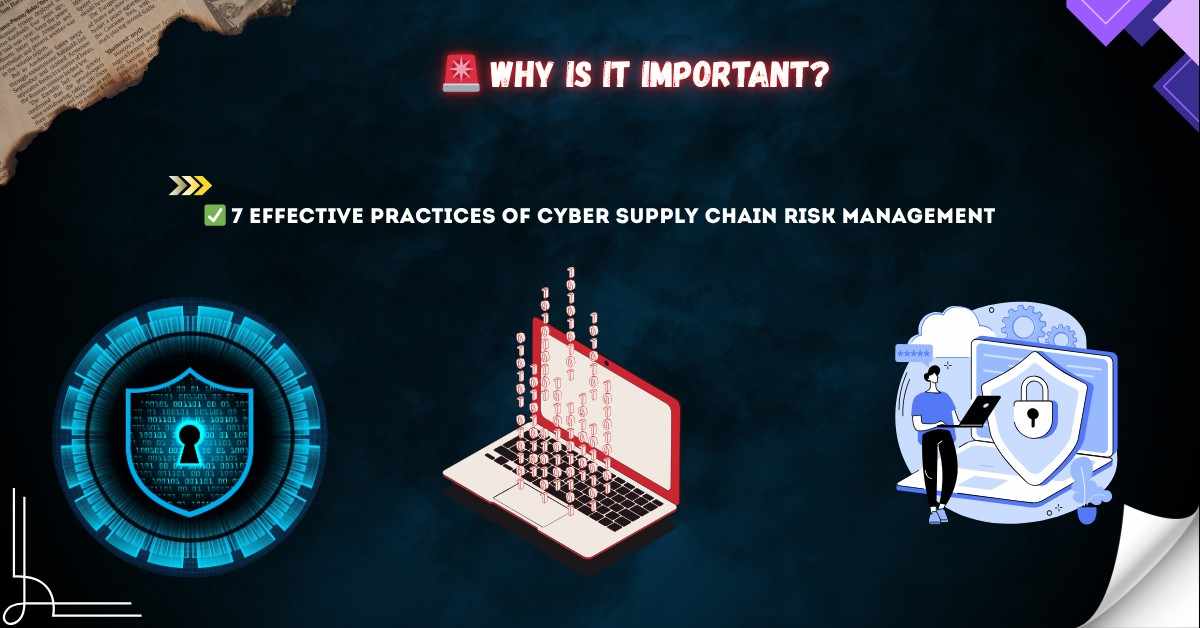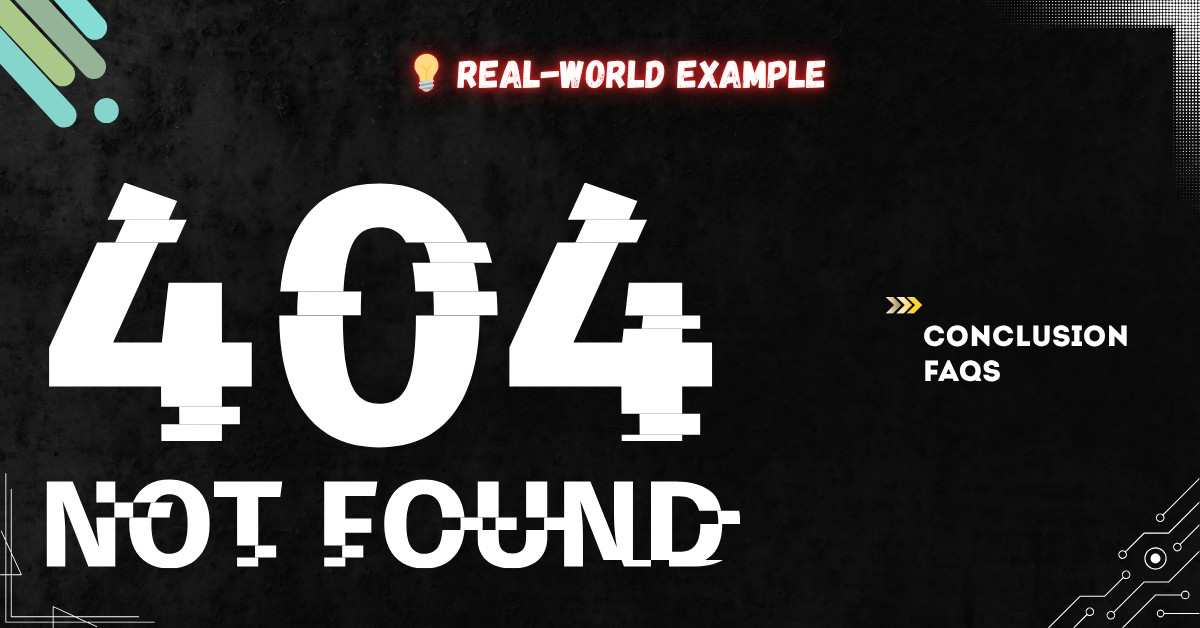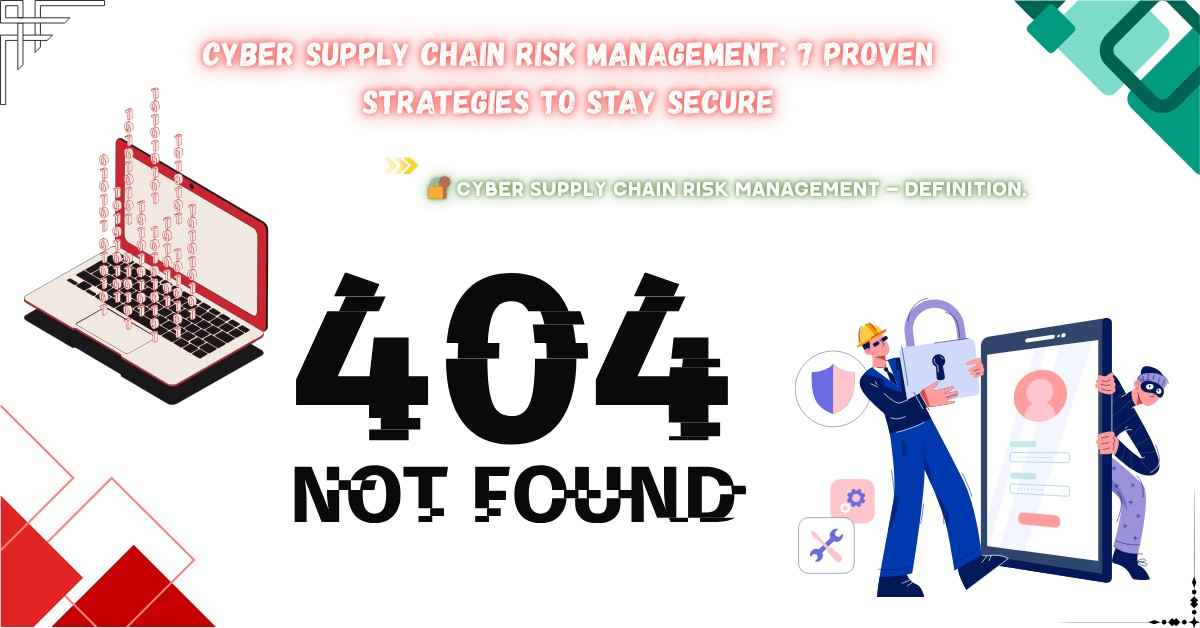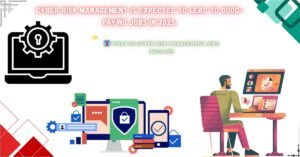The technology plays an important role for every business in the modern world. Many outside vendors, software tools, and services are used by companies to run them. But what if we are dealing with one of these parts, which has a hidden danger? That is where cyber supply chain risk management is also very important. This is one of the ways of securing your business from attacks and data leakage through the supply chain.
In layman terminology, this guide details about cyber supply chain risk management. We’ll also see 7 easy and effective strategies to make your business stay safe in 2025 and beyond.
🔐 Cyber Supply Chain Risk Management – Definition.
The cyber supply chain risk management is the process of identifying and plugging gaps on your firm’s technology supply chain. This entails dangers that emanate from:
- Third-party software
- Hardware vendors
- Cloud service providers
- Logistics partners
- IT outsourcing firms
- If there is just one of them that gets hacked, then your entire system might be in jeopardy. Therefore, cyber supply chain risk management does not only protect your data but also your systems and your customers.

🚨 Why Is It Important?
Cybercriminals now focus on supply chains as it is easier for them to come in through a weak vendor. It is how this is how big companies such as Target and SolarWinds had suffered from huge data breaches. If your vendor is not not secure, your business is not secure as well.
It is due to this reason the cyber supply chain risk management is relevant so that it can assist you to:
- Avoid financial losses
- Protect customer data
- Keep operations running
- Follow legal and security rules
Further reading suggestions: Malicious Go Modules Drop Disk-Wiping Linux Malware in Advanced Supply Chain Breach
✅ 7 Effective Practices of Cyber Supply Chain Risk Management
The following are seven strong ways of safeguarding your business using cyber supply chain risk management:
1. Know All Your Vendors
Build a thorough list of vendors that you work with: from software to shipping. Then, look at what type of access each vendor has to your system or data.
This is an easy step towards cyber supply chain risk management as you will be able to identify, who can affect your business.
2. Check Vendor Security
It is important to ensure how secure are your vendors before signing a contract with them. Ask these questions:
- Do they have security certifications?
- Do they use firewalls and encryptions?
- Has there been a data breach on the institution before?
- Collaborate with strong cybersecurity rule-makers only. This evokes trust and reduces risks.
3. Up-to-date Contracts with Well Defined Security Rules
Draft contracts that have stipulated cybersecurity guidelines. These can include:
- The way in which vendors need to protect your data.
- How fast they should tell you that the game is not right.
- What measures must be taken by them in case of cyber attack.
- This means that vendors do not play with cyber supply chain risk management.
4. Monitor Vendor Performance
Don’t just trust vendors blindly. Regularly check their performance. You can:
- Use third-party audits
- Ask for security reports
- Run regular system checks
- Instead of doing passive cyber supply chain risk management, one should watch his or her vendors all the time.
5. Create a Backup Plan
For in case something happens wrong, be prepared. Design a plan of how to repel the vendor cyber attacks. This includes:
- Contact lists
- Response steps
- Data backup processes
- Preparation is a major issue of successful cyber supply chain risk management.
6. Train Your Staff
There is a need for your employees to know about supply chain risks. Teach them how to:
- Spot phishing emails
- Report strange activity
- Use secure passwords
- A smart team takes your cyber supply chain risk management to an even greater level.
7. Use Cybersecurity Tools
Spend money on tools that track your supply chain and protect it. These include:
- Risk management software
- Endpoint protection tools
- Real-time monitoring systems
- The risk of cyber supply chain is more feasible and workable with the requisite tools.
- Benefits of cyber supply chain risk management.
- It will be useful for your business if you take for granted the cyber supply chain risk management.
- Reduced Risk of Attacks – Denying the hackers as many opportunities to break inExecutives are ruing the day they decided to take their IT operations to the cloud.
- Enhanced Customers’ Trust – The customers believe they are in the safer hands using your services.
- A more robust Business Continuity – Your business is in a stable state
- Regulation Compliance – You ensure the rules such as GDPR, HIPAA, etc are met

💡 Real-World Example
In 2020 many government and business set-ups in the U.S were invaded by the hackers. thanks to the SolarWinds software. The source of the attack was one of the software vendor; nonetheless, it spread out to thousands of users.
It shows the effect of a weak link in your chain of supply and how it could become a huge disaster. It also gives the reasons why cyber supply chain risk management is necessary.
❗ Final Thoughts
Cyber threats surround the world and your supply chain can be the most convenient avenue for the attackers to get to you. That is why cyber supply chain risk management is something that all companies of any size should be serious about.
With the 7 strategies above, you can reduce risks, guard your data, and maintain a strong business with the increased cyber attacks.
Further reading suggestions: Critical GCP Cloud Composer Vulnerability Lets Attackers Exploit Malicious PyPI Packages
🚀 FAQs
1. This is what in layman language refers to cyber supply chain risk management?
- ANS: Cyber supply chain risk management is a way of securing your business from hackers that would attack your business via your business partners, vendors, or service providers.
2. Importance of cyber supply chain risk management.
- ANS: It is important because hackers tend to attack suppliers or software vendors in order to get access to your systems. The management of this risk will ensure the safety of your business.
3. Who uses cyber supply chain risk management?
- ANS: Any enterprise that relies on any third-party software, services or third parties — which means virtually every business in the contemporary context — needs it.
4. What are the most common cyber risk in the supply chain?
- ANS: Typical risks are weak password, malware-infected software, lack of good vendor security, and insider threats.
5. What are the ways through which small businesses can deal with cyber supply chain risk management?
- ANS: Small businesses can begin with list of vendors, checking security policies, training of staff, and using basic monitoring tools.
6. What are the instruments which aid in managing cyber supply chain risk?
- ANS: Some useful resources include vendor risk assessment softwares, network monitoring systems and backup solutions.
7. How many times do cyber supply chain risks need to be reviewed?
- ANS: At least once every 6-12 months, or if you change your vendors or systems (more frequently).
Remember: One poor vendor can jeopardise your entire business. Don’t wait for a cyber attack to take place. Make your first step towards cyber supply chain risk management today — and stay secure tomorrow.




Pingback: Cyber Risk Management Jobs: Top Lucrative Picks 2025
Thanks Bro For This Information
your welcome